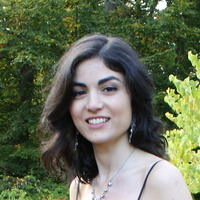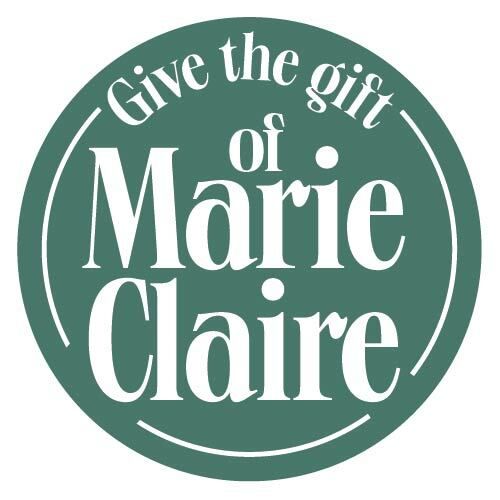These Indigenous Reindeer Herders Are Fighting for the Right to Their Ancestral Lands
In the face of decades of cultural erasure, the Sámi women are striving to keep their culture, language, and livelihoods alive.


In northern Europe, where winter temperatures hover between -13 and -22 degrees Fahrenheit, reindeer roam an ancient pine forest that’s blanketed by snow. That might sound like a fantastical scene from a snow globe, but for the Sámi people, the Indigenous inhabitants of Arctic Sweden, Norway, Finland, and the Kola Peninsula in Russia, this is home. The expansive region, known as Sápmi, is their ancestral land—and herding reindeer there has been a form of survival for them since the prehistoric era.
You may, in fact, recognize the Sámi people, the only Indigenous population left in Europe, from representations of their community in the Frozen films. After the Sámi felt Disney appropriated their culture in the first movie, the company collaborated with Sámi representatives to ensure a more respectful portrayal of their culture in Frozen II—a culture with its own unique languages and customs. But because of global warming, industrialization, colonization, and cultural erasure by Scandinavian governments, this culture has nearly vanished.
It is not disappearing without a fight. It’s the Sámi people’s steadfast female leaders who are advocating both domestically and internationally for their communities’ rights to their land and heritage. Sámi women tend to achieve higher levels of education than men of the tribe; many of them choose to attend universities in order to take on additional work, like nursing, entrepreneurial ventures, or teaching to help support their families, explains Outi Paadar, a Sámi journalist and Sámi history and culture researcher.
Tiina Sanila-Aikio was about 9 when she was initiated into the physical work of gathering, marking, and vaccinating reindeer. Little did she know that she’d grow up to become the first female president of Finland’s Sámi Parliament, a position she held from 2015 to early 2020. (This is the official representative body of the Sámi people in Finland, which is separate from the country’s federal government. Sámi people in Norway and Sweden have their own parliaments as well.) Sanila-Aikio is one of the many women heading the Sámi political scene: Norway currently has a female president of its Sámi Parliament, Aili Keskitalo. Outside of their parliament, citizens can also be elected to the Saami Council, a nongovernmental, more grassroots organization that advocates for the group across Sweden, Norway, Finland, and Russia. The Saami Council, dominated by women (10 of the 15 members are female), currently has a female president too: Christina Henriksen. All are pushing for the preservation of Sámi rights and sovereignty within their home countries.
Of the estimated 80,000 to 100,000 Sámi people spread out across Sápmi, only about 10 percent are involved in reindeer herding. It’s a laborious job that requires families to migrate across the roughly 150,000 square miles of land throughout all four seasons, tracking, breeding, caring for, and, in some cases, hunting reindeer, both to feed their families and to sell the meat. Many Sámi also learn the art of making handicrafts from parts of the reindeer they’ve hunted, which they then sell in markets. Due to climate change, the numbers of reindeer are dwindling and Sámi herders must also rely on fishing to live. Traditionally, Sámi men inherit and head the reindeer-husbandry business, though women and children are also heavily involved. (Even during her presidency, Sanila-Aikio helped keep her family’s reindeer-herding business afloat—in addition to being a traditional Sámi language teacher, mother, and musician on the side.)
Temperature patterns in the Arctic in the last 10 years have been more dramatic than ever. According to the World Wildlife Fund, the Arctic is warming at almost twice the rate of the rest of the world, especially affecting animals that build their habitats on sea ice and snow (like reindeer). Even a change of a few degrees, like the current average rise of about 2.3 degrees Celsius across the Arctic since the 1970s, can greatly impact reindeer feeding patterns—and, with those, the Sámi’s economy.

Last winter was particularly difficult for reindeer herders. Sanila-Aikio explains that because the weather was regularly swinging from 5 degrees Celsius (about 41 degrees Fahrenheit) to -30 degrees Celsius (about -22 degrees Fahrenheit), the snow would melt and then harden, making it almost impossible for the reindeer to dig under the ice to get food. In those cases, the herders have to feed the reindeer themselves—a challenge, as Sámi herders don’t believe in fencing in the animals. Many reindeer were lost as a result.
Get exclusive access to fashion and beauty trends, hot-off-the-press celebrity news, and more.
In order to combat rapid global warming, Scandinavian governments have put “sustainable” initiatives in place, including the implementation of wind energy. But, Henriksen says, building wind turbines on the Sámi land in Norway is itself harmful to Sámi society: The wind-turbine construction, which is set to continue until 2021, takes place in an area that includes reindeer migration routes and pastures, and it will disrupt key hunting and fishing areas as well. “If all the land was to disappear for industrial development, disguised as a ‘green future,’ it would in the end mean that there is nothing more for our existence to build on; our knowledge is so closely attached to the land,” Henriksen says.
Henriksen represents the Sámi at the UN Economic and Social Council (ECOSOC), reporting on Indigenous issues. In regard to the wind-turbine dispute, she is working to influence the Norwegian government to give the Sámi their pastures back. (So far, a Norwegian court has ruled that the Sámi herders should receive financial compensation totaling 90 million kroner, or $9.6 million, to make up for the loss of land.) She also advocates for the Sámi by reporting to other UN committees, including the Committee on the Elimination of Racial Discrimination and the Human Rights Council. The Saami Council is a permanent participant in the Arctic Council, representing Indigenous rights amid green-energy development that’s happening across Europe.
In Finland, the Sámi are fighting to keep their land from being turned into a railroad. During Sanila-Aikio’s Sámi Parliament presidency, the Finnish government proposed construction of an Arctic railway through Finland, designed to ship cargo from Asia to Europe. “They’re selling the Arctic railway as a ‘green’ way to transport things, but it will be transporting goods that are not good for the climate,” such as oil, gas, and products like woof and ore for mining and forestry, Sanila-Aikio says. The mining industry itself has polluted waterways, she adds, which has disrupted the ecosystem of Atlantic salmon, a major resource in northern Europe. The Arctic railway would continue to disturb waterways and the wildlife around them—and Sámi hunting and fishing practices. This spurs a “snowball effect,” as Sanila-Aikio refers to it, of the various man-made changes to nature that impact entire ecosystems and Indigenous communities.

Christina Henriksen
The Sámi Parliament as well as the Saami Council partnered to protest the Arctic railway initiative earlier this year, but the government has not yet canceled plans to build it, and a private investor has stepped up to potentially fund the project, Sanila-Aikio says. Henriksen reiterates that what some parts of the world—especially places where leaders don’t even acknowledge the existence of climate change—view as “sustainable development” is not necessarily legitimately sustainable for the Indigenous inhabitants of an area. “The Sámi homeland is not something you can just intervene on and profit from,” Henriksen says, adding that the Sámi have the right to veto initiatives that are ultimately harmful to their land. “We expect national government and businesses to respect Indigenous lands; we should be entitled to not give consent.”
“To many, it may seem like wilderness, [but just] because there are no fences or houses or people there all the time doesn’t mean it is up for grabs,” Henriksen continues. “What you may see as ‘unused land’ is ‘unused,’ technically speaking, but our culture and way of living chooses to leave it unused to provide for others who come after us.”
Global warming is just one threat to the Sámi’s traditional way of life. Like many Indigenous people, the Sámi people are no strangers to the erasure of their culture: Historically, other European groups have occupied their lands, and since at least the 18th century the Norwegian, Finnish, and Swedish governments have imposed regulations on reindeer husbandry in favor of more lucrative economic ventures, like logging and mining.
Along with economic hindrances, the Sámi have also been forced to assimilate. After World War II, many Sámi children were placed into European boarding schools that forbade the teaching of the Sámi language and culture. “Norway even had an official policy that the Sámi language should be erased,” Paadar says. “They were so clear that Sámi shouldn’t speak Sámi.”
Consequently, not only are the Sámi people minorities in their natural states (they now make up only about one percent of the population in each of the four countries they inhabit), but of those who remain, not many can speak the traditional languages or teach those Sámi languages to future generations. Practicing traditional reindeer husbandry, during which the majority of the Sámi languages are spoken on a daily basis, is one of the few ways their dialects are kept alive.
Many of the women fighting for the Sámi’s right to live and work on their native land are also passionately working to instill their heritage in the next generation. Henriksen, who will be welcoming her first child this winter, also has a background as a teacher of the North Sámi language. Sanila-Aikio, who teaches Skolt Sámi culture and language, one of the minority Sámi tongues, is also training her 11-year-old daughter in the work of reindeer husbandry. Her daughter has been helping her parents with the reindeer roundups this year, now that she’s gotten old enough and strong enough to wrangle the calves. That’s just one way she’s carrying on her mother’s legacy.
In these, the depths of winter, the reindeer have migrated to their seasonal pastures and are digging through the snow for their survival. The Sámi women, meanwhile, are suiting up for battle, whether that means wrangling reindeer with their families or reciting a speech at a virtual UN forum. Like the cartoon heroines they inspired, these fierce leaders will stop at nothing from defending the snowy oasis they call home.

Subscribe here with the code HOLIDAY50 to get 50% off.
ALSO BY MARA SANTILLI

This piece has been update.
Mara is a freelance writer and editor specializing in culture, politics, wellness, and the intersection between them, whose print and digital work has appeared in Marie Claire, Women’s Health, Cosmopolitan, Airbnb Mag, Prevention, and more. She’s a Fordham University graduate who also has a degree in Italian Studies, so naturally she’s always daydreaming about focaccia.
